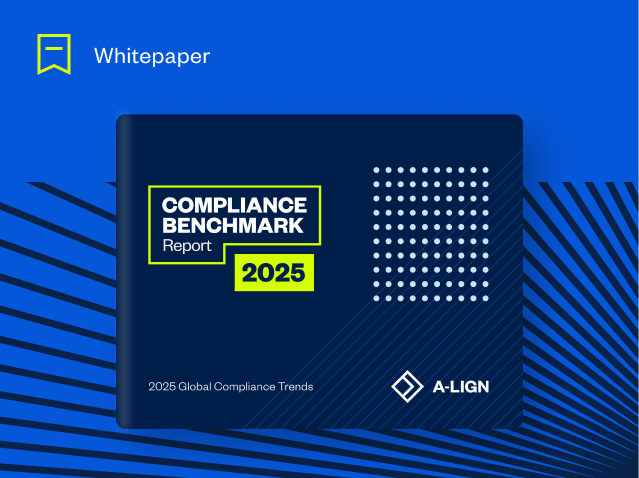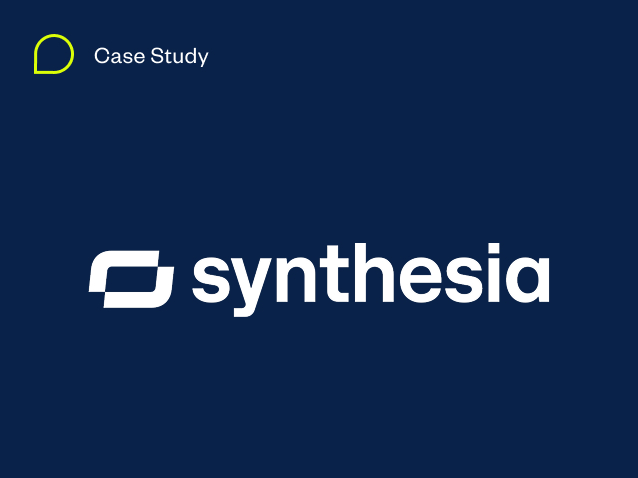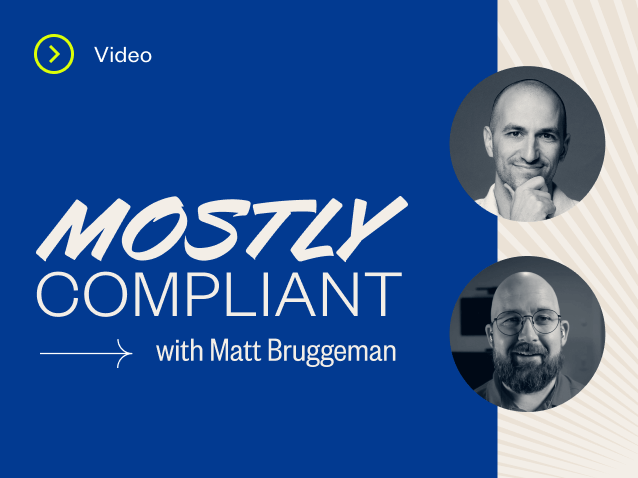Combine Multiple Audits to Save Time and Resources
Many organizations have a huge opportunity to combine multiple audits to save time and resources while completing compliance assessments.
Due to an increase in technology and the evolution of the cybersecurity compliance landscape, organizations of all sizes are finding themselves tasked with conducting various compliance audits throughout the year to show both their customers and their industry peers that they take the privacy and security of data seriously. In many cases, these audits are being conducted in a reactive manner, costing organizations time and resources.
There is a better way to conducting multiple audits.
In our 2021 Compliance Benchmark Report, we asked more than 200 cybersecurity, IT, quality assurance, internal audit, finance, and other professionals about their compliance programs. We learned that the majority of organizations, regardless of industry, do not have a strategy in place to reduce redundancies when completing multiple compliance audits over the course of each year.
In fact, 85% of respondents conduct more than one audit every year, yet only 14% consolidate audits into a single annual event. This means organizations are using their resources inefficiently and scrambling to execute on compliance programs.
Who Consolidates Their Audits? Not Many.
With so much revenue on the line, and so many compliance requirements in play, it seems logical that organizations would conduct multiple audits in a strategic, unified manner. But this is far from true.
Industry Can Drive Audits
It makes sense that many organizations look to industry-specific guidelines on which audits are required to ensure they remain compliant with industry regulations. When looking across every industry, we found that healthcare is the industry most likely to not consolidate audits. In fact, 94% of respondents within the healthcare industry stated they conduct multiple, individually-managed audits and assessments.
Companies in the technology sector not only conducted the highest number of audits, but also had the highest rate of consolidated audits at 26%. They were also the industry with one of the highest usage rates of technology, using software to help prepare audits and streamline the process 31% of the time, which plays a big role in the ability to consolidate audits.
Size [Also] Matters
The number of audits an organization conducts per year can be impacted by many factors including its size, industry, annual revenue, and more. In fact, we found that most organizations with more than $1 billion in revenue typically conduct more than six audits per year.
We found that 60% of organizations that surpass $5 million in revenue typically complete more than four audits each year. This far exceeds the 21% of organizations that earn less than $5 million in revenue and complete more than four audits per year.
Time & Resources Wasted
Did you know that 27% of respondents stated one of the biggest challenges associated with their audit process is evidence collection? When done as a manual process, it is tedious and takes up valuable resources, not to mention that teams or departments operating in a silo will often gather the same evidence to be used at various points over the course of the year. This not only creates redundancies in the efforts at an organization, but it wastes valuable time.
Organizations that work through multiple audits as disjointed projects often experience a stress-filled and frustrating audit situation for all parties involved. But this isn’t only felt during the audit process itself; it’s also felt during the preparation.
In fact, more than 50% of respondents stated they spend one to two months preparing for each audit or assessment, and 17% stated they spend six months or more preparing for an audit or assessment. The time spent preparing for every audit adds up quickly, especially when organizations are conducting more than one audit every year.
If, however, organizations consolidate audits into a single timeline, it can greatly ease the disjointedness of auditing. An added bonus? Because the audit is strategically planned and expected, it becomes less of a last-minute scramble.
Key Takeaways
The findings shared in our Compliance Benchmark Report illustrate the impact of not implementing a strategic, year-round approach to preparing for audits and assessments. Basically, the combination of a disjointed auditing process with the time and resources required to conduct manual evidence collection creates a perfect storm of chaos.
It comes down to this: Conducting multiple audits throughout the year is complex, but it doesn’t have to be chaotic. Taking a proactive approach to preparing for, and conducting, audits can create efficiencies that help an organization optimize evidence collection and streamline how that evidence is used. And perhaps the biggest benefit? It frees up resources to focus on the more strategic side of the business.





